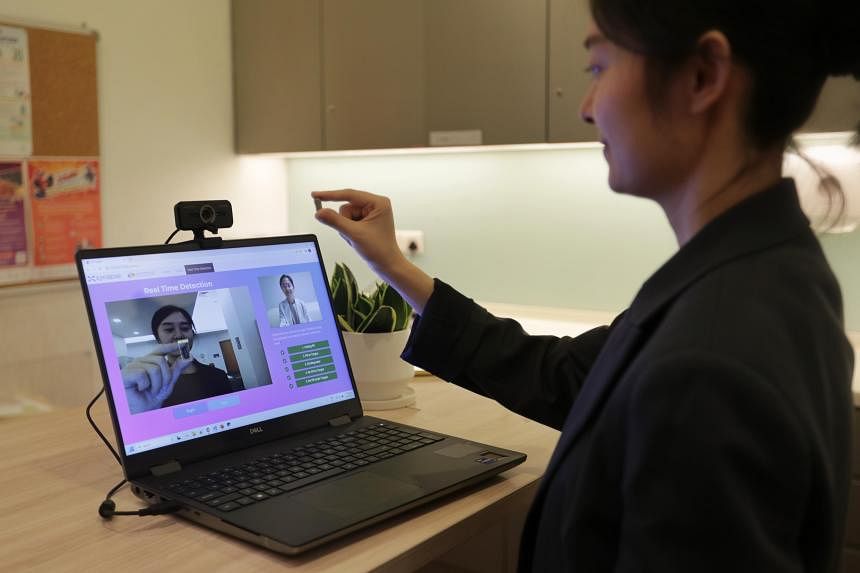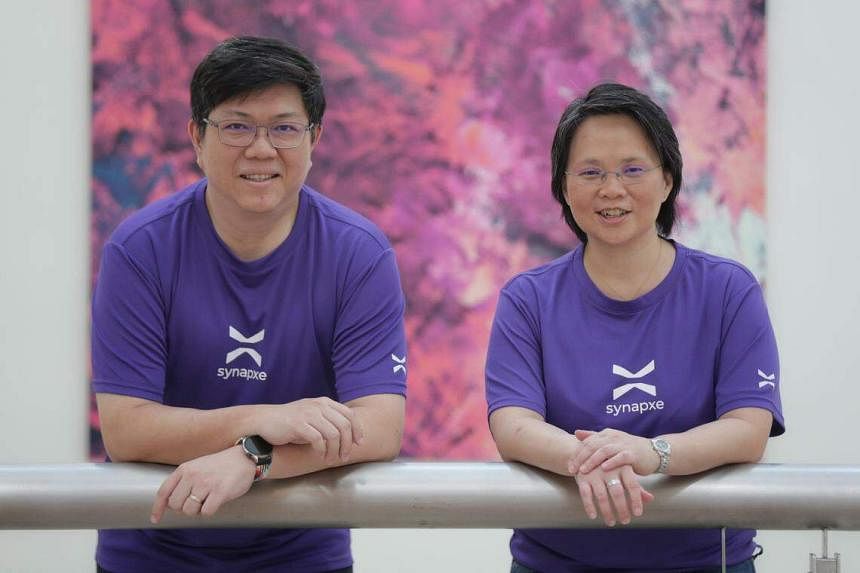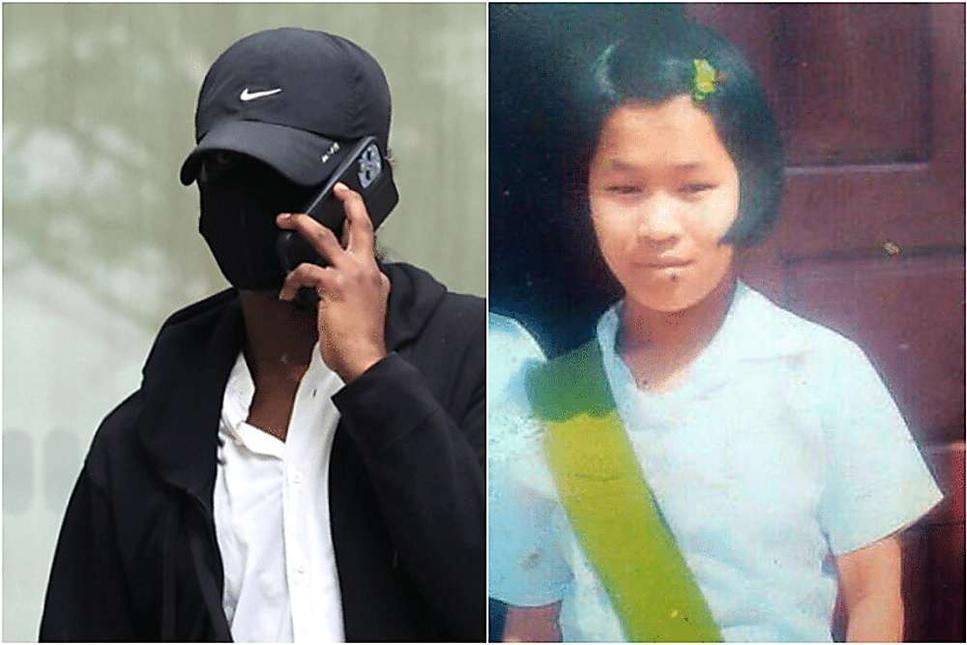Hospital care at home, nudges to remind S’pore residents to take care of health to be the norm

SINGAPORE – In the next five to 10 years, many of the services that can be offered in a hospital could be delivered in the comfort of one’s home.
Telehealth will become more sophisticated, artificial intelligence (AI) will help to improve care as well as relieve a bigger part of doctors’ and nurses’ workloads, and patient care will be more precise.
Soon, people will be nudged – through an app or a wearable device – to move more, eat less or sleep well as part of their care plan, as Singapore helps residents take charge of their health under the newly launched Healthier SG strategy.
Behind the scenes, national healthcare technology agency Synapxe – previously known as Integrated Health Information Systems (IHiS) – is working hard at making these scenarios a reality sooner rather than later, its chief executive officer, Ms Ngiam Siew Ying, said in an interview to mark the launch of the agency’s new identity on Thursday.
Synapxe supports the operations of 46 public healthcare institutions, including acute hospitals, speciality centres and polyclinics, as well as some 1,400 partners such as community hospitals, nursing homes and general practitioners.
She said the new name reflects the growth of the agency’s work in scope and scale in shaping the future of health tech in Singapore to power key programmes such as Healthier SG.
At the launch of Synapxe at the Singapore Expo on Thursday, Health Minister Ong Ye Kung said that the agency, as a critical entity under his ministry, will ensure that patient medical records, data, care and medication, and healthcare subsidies and assistance – just like neurons of a human body – can transmit and flow seamlessly throughout the healthcare ecosystem.
Synapses are the critical nodes for transmitting information between neurons and throughout the body, he said, referencing the agency’s name.
Mr Ong listed out five priorities for the agency to help connect the healthcare ecosystem, including a national repository for patients’ medical records and a system for remote medical consultation.
The former is the core objective of the National Electronic Health Record (NEHR) system.
To ensure that residents can access their health records conveniently, IHiS developed the HealthHub app. HealthHub is a window to NEHR, through which residents can securely access their own medical records and more, said Mr Ong.
Today, two in three Singapore residents are using HealthHub and about one million use it every month, from managing medical appointments and viewing health records to ordering medication, he added.
Ms Ngiam said technology in Singapore is already being melded into healthcare, but the extent to which this is happening will accelerate.
Today, telehealth comprises mainly a consultation via videoconferencing with a doctor, who may send through an electronic medical certificate and order medication.
“The future (of) telehealth would be almost anything that you can do inside the hospital, apart from maybe surgery... and we need to start to push the boundary towards what’s possible there in terms of telehealth,” said Ms Ngiam.
This means readying the whole tech ecosystem, which includes electronic medical records, medication delivery, test results and an operations centre to respond to remote monitoring alerts when someone who is cared for at home suddenly experiences elevated blood pressure.
It is not just that Singapore can no longer continue to just build more hospitals, clinics or nursing homes to meet the burgeoning needs of a rapidly ageing population. It is also about harnessing the benefits that only technology can bring, said Ms Ngiam.
“Health outcomes may be improved if the candidate isn’t always in an institution,” she added.
This form of care is already happening, although at a small scale.
Mr Ong said last week that the Health Ministry will boost the number of virtual wards, known as Mobile Inpatient Care at Home or MIC@Home, from approximately 100 to 200 beds to allow patients who require acute hospital care to have their active medical issues managed at home.
Ms Ngiam expects that within five to 10 years, premise-neutral services such as virtual wards or specialist care will be much more pervasive.
“I’m basing that on the fact that the demographic wave will hit us at that time,” she said.
By 2030, one in four Singapore citizens will be aged 65 and above, up from one in six today.
Meanwhile, care will become more precise and personalised.
“For example, if your doctor said that you need to exercise more, you need to eat less or sleep more... potentially, you can imagine your apps giving you nudges just to remind you to (do these),” said Ms Ngiam.

Mr David Chua, director of Synapxe’s Healthier SG Technology Office, said that in the future, nudges could be sent even to remind people to take their medications at specific times.
To support Healthier SG, Synapxe is working on a solution that uses AI tool ChatGPT to summarise a patient’s health record for up to five years.
It will flag problems that need to be addressed immediately, saving the doctor precious minutes of having to read through it, said Mr Andy Ta, director of data, analytics and AI at Synapxe.
The plan is to pilot this Assisted Chronic Disease Explanation or ACE AI model, which is accessible via the smart clinic management systems that GPs use, with 20 GPs at the end of 2023, he said.
Synapxe is also partnering SingHealth and NTT Data on an imaging AI model called AIM.SG. It will provide radiologists with a more efficient way of analysing images that prioritises patients with more life-threatening issues.
AIM.SG will be piloted from Friday at Singapore General Hospital and Changi General Hospital to read patients’ chest X-rays. Radiologists will still need to confirm the results.
In January, Synapxe, which has a staff strength of around 4,000, launched Health X, an innovation platform to look into more AI applications in healthcare.
Ms Ngiam said the organisation is constantly thinking up new tech solutions to support the healthcare sector in anticipation of future needs, instead of simply functioning in a supporting role, which it also continues to do.
She said AI has advanced so tremendously that it will make fewer mistakes than humans in the future.
“Humans make errors... My hunch is that with digital support, your error rates will come down,” she said.
“At some point... if you’re trying to treat a patient and you’ve never used technology or never used AI to help you diagnose and treat, you’re not actually giving the best care to the individual.”
Read the full story for $0.99/month
Save more than 90% on your subscription and get over 500 subscriber-only articles every month.
ST All-Digital Package - Monthly
$29.90 $0.99/month
No contract
$0.99/month for the first 3 months, $29.90/month thereafter. T&Cs apply.
Unlock these benefits
Get subscriber-only articles on ST Web and app
Easy access on up to 4 devices
2-week e-paper archive to ensure you never miss out on news that matters to you
Join ST's WhatsApp Channel and get the latest news and must-reads.









No comments:
Post a Comment